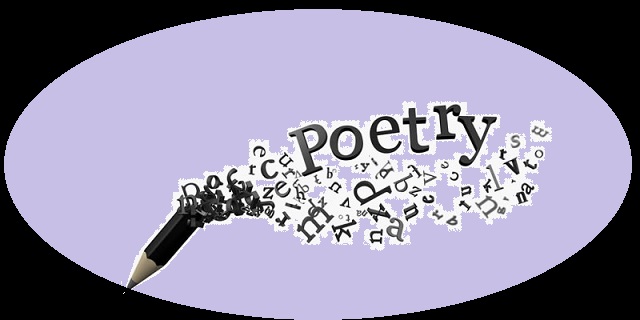by Laura Klinkon
At some point in my upbringing, I was told that an effective composition has unity, which I have taken to mean that its parts should cohere, and in prose, for example, there should be appropriate transitions; I also take it to mean that the overall “meaning,” impact, or impression of the composition should be singular.
An article entitled, “On Unity in Poems,” by William H. Capitan, (The Monist, April 1966, pp. 188-203) suggests that unity may be of different kinds, as provided by setting, event, atmosphere, era, subject, voice, character, feeling, topic, purpose, intent, or “meaning.” The challenge in reading poetry would then be to recognize the kind of unity in any work that is before us. Capitan also suggests, as a criterion for unity, the appropriateness of the poem to the author’s “feeling,” which, without further examination, can seem a bit vague.
Traditionally, coherence in poetry has been supported by the elements Capitan suggests, but it has also been in large part supported by a recurrence of forms, through rhyme and/or meter, created according to pre-existing models. It has also come about through the chronological retelling of events as in narrative poetry. In fact, both narrative and modern free verse continue to be held together by internal rhyme and various kinds of repetition that, in addition to meter, conventional or not, help to hold a single work together.
An article by Christopher Kempf (Shenandoah, Vol 65, No. 1, July 2015 <https://shenandoahliterary.org>), speaks of “associative” composition, which calls to mind the psychoanalytic “free association” technique, as well as the “stream of consciousness” novel such as those of Virginia Woolf or William Faulkner. He points to its fundamental difference from narrative composition, the latter depending on a causal or chronological buildup of events whereas the elements of free verse or the modern style of poetry seem, on the surface at least, to be random.
Though there appears to be a clear difference between the two categories, both may certainly include the elements suggested by Capitan—as well as others, for example, multiple narrators. So the real difference between “associative” and “narrative” seems a matter of degree, i.e. the extent to which the author includes elements that are directly “pertinent” to a central thread. In narrative, they would lead to a climax or dénouement whereas, in associative, mostly to a suggested truth, feeling, mood, or ambiance.
In his essay, Christopher Kempf points to something that should perhaps concern us with regard to the effectiveness of modern poetry; it is his opinion that associative poetry, in its extreme, may become, as he says, “dissociative,” such that the poet may display an indifference to the reader’s ability to understand. In this regard, he points to the propensity of modern poets to create images, circumstances, or allusions that are so personal or so alien to the experience of the reader, that the latter is no longer capable of relating to the content of the poem. He gives as an example the propensity of T.S. Eliot to fill his poems with allusions both personal and intellectual that are likely to escape the reader.
What he doesn’t mention is the difficulty a reader may have in recognizing connections between the elements of modern poetry due to the kind of symbolism it manifests, which dates back to Mallarmé and continues with William Carlos Williams. For example, though we know that the American flag stands for America, depending on the context, it can be a symbol of liberty, of opportunity, or even of oppression. That is, as opposed to its “direct” meaning, the “extended” symbol may suggest much more: an impression, a connotation, an effect that can be intensified by elements in juxtaposition to each other. We recall Williams’ poem:
“so much depends/upon/a red wheel/barrow…/beside the white/chickens…”
the most important word being “beside.”
Yet readers may miss the suggestions and therefore the connections between the elements of a poem.
Nevertheless, Charles Olson, a well-known poet and theorist, seems to want to “open the field” and give poets free rein through what he calls “projective” poetry. In his theory, “content” is synonymous with the poet’s feeling and carries the essential import of the poem. “Content” should inspire form as follows: inspiration is prompted by feelings, which are driven by an energetic engagement with “exterior” objects, the mind then translating them into sonorous syllables that have “breath.” or musicality. Olson does not seem to be directly concerned with “unity” and cohesiveness—leading us to ask the question, “How do we connect the elements in modern poetry?
We cannot expect to find logical “meaning,” or resolution. Rather, we can expect to gain an impression, based on the objects or events described, recounted, or alluded to. And we can expect to get a sense, more or less indirectly, of the author’s feeling towards the events and objects included in his composition based on their “extended” meanings. Many poems will be more suggestive or connotative and less narrative or directly communicative. With respect to the impression we form of the poem, it is likely to be multifarious, with its thread or threads something of a challenge to find.
Ascribing to Olson as well as to long-held tradition, a poem should be judged for its sound, energy, and strength of feeling. Hopefully, it should have recognizable elements and be “associative” in a recognizable way,





